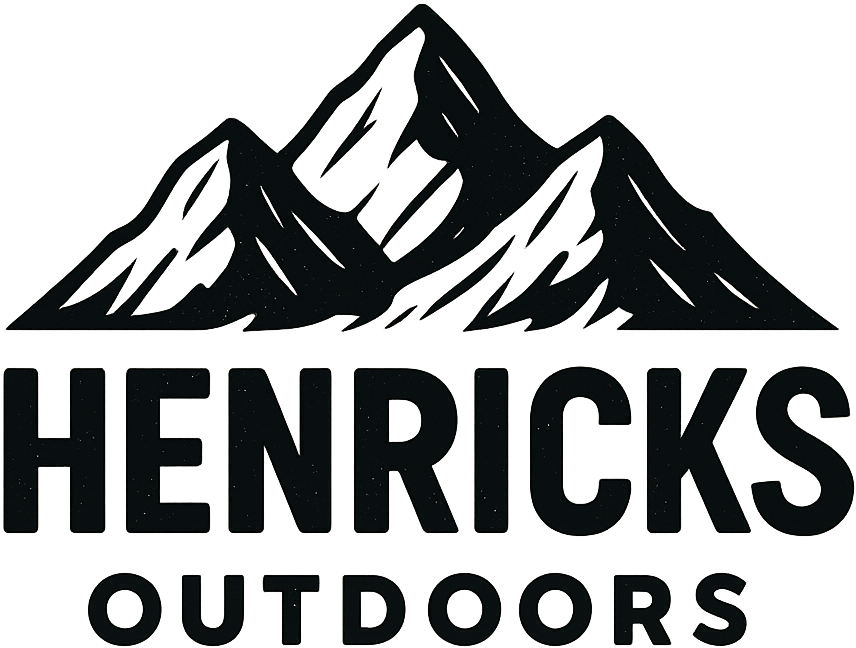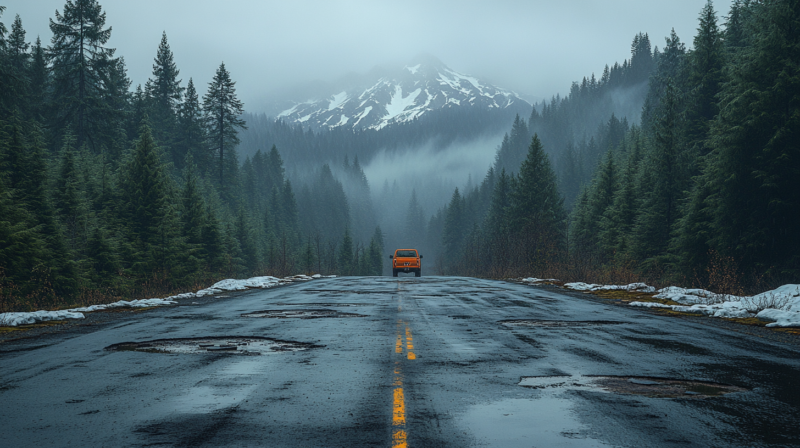🌄 A Modern Echo of a Historical Legacy
Ever wondered how trade policies could connect to your favorite national park trail? Here’s a surprising twist in U.S. history that ties tariffs to the wilderness you love.
On April 7, 2025, President Donald Trump met with Israeli Prime Minister Benjamin Netanyahu and touted tariffs. “Our country was strongest, believe it or not, from 1870 to 1913,” he said. “You know why? It was all tariff-based; we had no income tax.” That revenue stream evokes Theodore Roosevelt’s conservation feats—tariff funds indeed bolstered his push to preserve America’s wild spaces, a link that’s caught the eye of hikers, campers, and history buffs, even those at odds with Trump on other fronts.
So, how did tariffs, Roosevelt, and public lands intersect? More than you might think. Let’s explore how trade taxes helped create Crater Lake’s serene depths, the Grand Canyon’s awe-inspiring expanse, and vast forests where adventurers roam today.
💰 Tariffs: The Forgotten Fuel of Federal Growth (1870–1913)
From 1870 to 1913, before the 16th Amendment introduced the federal income tax, tariffs on imported goods were the U.S. government’s financial backbone. Historical records confirm they generated 40% to 90% of federal revenue, depending on the year, funding everything from roads to the military and crucial land preservation.
📊 In 1900, tariffs brought in $233 million (41% of federal revenue) per the U.S. Treasury’s annual report.
Presidents like William McKinley championed high tariffs (e.g., the 1890 McKinley Tariff) to shield American industries, creating a robust federal budget. This fiscal stability set the stage for Roosevelt’s conservation revolution after McKinley’s assassination in 1901. For outdoor enthusiasts, this isn’t just trivia, it’s the economic foundation that shaped our national parks.
🦅 Roosevelt Rises: A Naturalist in the Oval Office
When Theodore Roosevelt became president at age 42, he brought a deep love for nature to the White House. A hunter, hiker, and Dakota Badlands rancher, he’d experienced the wild firsthand, most famously camping with John Muir in Yosemite in 1903.
✍️ “There is nothing more practical in the end than the preservation of beauty.” —Theodore Roosevelt, 1910
Roosevelt didn’t just admire nature; he fought to protect it, leveraging a tariff-supported budget to launch an unparalleled conservation campaign.
🌲 Tariffs Fund Roosevelt’s Conservation Revolution
The tariff-driven economy gave Roosevelt the resources to act boldly. Treasury data shows:
- 1902: $254 million from tariffs (45% of revenue)
- 1908: $286 million (43% of revenue)
These funds bolstered the Department of the Interior, enabling Roosevelt to protect over 230 million acres (roughly twice Texas’ size) between 1901 and 1909. While tariffs weren’t earmarked specifically for conservation, they sustained the federal budget that made such initiatives possible.
🏞️ National Parks and Monuments Roosevelt Helped Establish
Role of Congress: National Parks are created by an Act of Congress. This means that Congress passes a bill that specifically establishes the park, defines its boundaries, and sets forth its purpose. According to the National Park Service, additions to the National Park System are generally made through acts of Congress.
Roosevelt’s Role: Roosevelt actively championed the establishment of new parks, often working to build public and congressional support for these measures. He lobbied Congress and used his influence to advance conservation legislation
National Parks (Established by Act of Congress)
- Crater Lake National Park (Oregon) – Signed into law May 22, 1902. Known for its 1,943-foot-deep lake. The park received 559,976 recreational visits in 2023.
- Wind Cave National Park (South Dakota) – Established January 3, 1903. Famous for its calcite formations. The park received 592,459 visitors in 2023.
- Sullys Hill National Game Preserve (North Dakota) – Created June 2,primero04. Now a game preserve, it’s a birdwatcher’s gem. In 2023, the refuge had over 80,000 visits.
- Platt National Park (Oklahoma) – Officially designated June 29, 1906. Now part of Chickasaw National Recreation Area. The Chickasaw National Recreation Area received 2,082,326 recreational visits in 2023.
- Mesa Verde National Park (Colorado) – Signed June 29, 1906. Its 4,700+ Ancestral Puebloan sites. The park received 505,194 visitors in 2023.
National Monuments (Established by Presidential Proclamation under the Antiquities Act of 1906)
Roosevelt also used the 1906 Antiquities Act to designate 18 national monuments, including the Grand Canyon (1908), which became a national park in 1919.
- Devils Tower National Monument (Wyoming) – Proclaimed September 24, 1906. The first national monument designated under the Antiquities Act. This dramatic geologic tower rises above the plains and captivates visitors with its sheer presence.
- El Morro National Monument (New Mexico) – Proclaimed December 8, 1906. Renowned for centuries of historic inscriptions etched into its sandstone cliffs by Native peoples, Spanish explorers, and early settlers.
- Montezuma Castle National Monument (Arizona) – Proclaimed December 8, 1906. A remarkably preserved cliff dwelling built by the Sinagua people, nestled high in a limestone recess.
- Petrified Forest National Monument (Arizona) – Proclaimed December 8, 1906. Now Petrified Forest National Park. Celebrated for its colorful deposits of fossilized wood and unique high-desert landscape.
- Lassen Peak National Monument (California) – Proclaimed May 6, 1907. Now part of Lassen Volcanic National Park. Protects the active volcanic region surrounding Lassen Peak, one of the few volcanoes to erupt in the continental U.S. in the 20th century.
- Cinder Cone National Monument (California) – Proclaimed May 6, 1907. Now part of Lassen Volcanic National Park. Highlights a striking volcanic cinder cone and surrounding lava beds.
- Chaco Canyon National Monument (New Mexico) – Proclaimed March 11, 1907. Now Chaco Culture National Historical Park. Preserves the impressive ruins of a major Ancestral Puebloan cultural center.
- Gila Cliff Dwellings National Monument (New Mexico) – Proclaimed November 16, 1907. Showcases ancient cliff dwellings constructed by the Mogollon culture within a rugged wilderness.
- Tonto National Monument (Arizona) – Proclaimed December 19, 1907. Protects two distinct cliff dwellings perched in the Superstition Mountains.
- Muir Woods National Monument (California) – Proclaimed January 9, 1908. Enshrines a magnificent old-growth redwood forest just north of San Francisco—one of the last of its kind.
- Grand Canyon National Monument (Arizona) – Proclaimed January 11, 1908. Now Grand Canyon National Park. A breathtaking natural wonder, carved over eons by the Colorado River.
- Pinnacles National Monument (California) – Proclaimed January 16, 1908. Now Pinnacles National Park. Features dramatic rock spires, talus caves, and rare wildlife in a rugged volcanic landscape.
- Jewel Cave National Monument (South Dakota) – Proclaimed February 7, 1908. Home to one of the longest cave systems in the world, adorned with sparkling calcite formations.
- Natural Bridges National Monument (Utah) – Proclaimed April 16, 1908. Highlights three massive natural stone bridges sculpted by water in a remote canyon.
- Lewis and Clark Caverns National Monument (Montana) – Proclaimed May 11, 1908. Now Lewis & Clark Caverns State Park. Contains a stunning limestone cave system with intricate formations.
- Tumacacori National Monument (Arizona) – Proclaimed September 15, 1908. Now Tumacácori National Historical Park. Preserves the remains of a 17th-century Spanish mission and tells the story of cross-cultural frontier life.
- Wheeler National Monument (Colorado) – Proclaimed December 7, 1908. Now Wheeler Geologic Area, part of Rio Grande National Forest. Noted for its bizarre and beautiful eroded rock spires in a remote setting.
- Mount Olympus National Monument (Washington) – Proclaimed March 2, 1909. Now Olympic National Park. Protects glaciated peaks, dense rainforests, and a wild Pacific coastline.
🌳 Building the National Forests
Roosevelt’s vision extended to sustainable forests. In 1905, he established the U.S. Forest Service under Gifford Pinchot, tripling national forestland from 56 million to 150.8 million acres by 1909.
Today, forests like Tongass (AK), Sierra (CA), and Black Hills (SD) offer trails, fishing, and biking. These are direct descendants of Roosevelt’s tariff-backed foresight.
🏕️ Roosevelt’s Legacy: Still Shaping Your Adventures
Roosevelt’s lands remain outdoor havens:
- Grand Canyon (AZ) – 4,919,163 visitors in 2024
- Crater Lake (OR) – 504,942 visitors in 2024.
- Mesa Verde (CO) – 480,065 visitors in 2024.
Yet, modern challenges loom: overcrowding, climate-driven wildfires, and policy debates over privatization. In 2019, conservationists opposed Trump-era proposals easing public land protections. Thankfully, no “Trump Tower Yosemite” emerged. Some experts are also concerned that rising temperatures could threaten ecosystems Roosevelt safeguarded.
🏞️ Where Tariffs Met Trails: An Unlikely Alliance
The takeaway? Tariffs weren’t just trade tools, they were the fiscal backbone that empowered Roosevelt to safeguard America’s wild heart. From 1870 to 1913, these taxes filled federal coffers, giving him the means to protect over 230 million acres. Every muddy hike, starlit campsite, and jaw-dropping canyon vista owes a debt to this unlikely economic-conservation alliance.
Picture yourself on a trail: the crunch of pine needles underfoot, the whisper of wind through ancient trees, the dizzying sweep of a granite horizon. Next time that beauty stops you in your tracks, consider this curious truth: trade taxes on goods like steel and sugar laid the groundwork for the paths you tread. Roosevelt turned revenue into refuge, and a century later, we’re still reaping the rewards.
🏕️ Walk in Roosevelt’s Footsteps
Roosevelt’s legacy is yours to explore. Plan your next adventure, support preservation, and gear up responsibly. Here’s how to dive in:
- Explore Crater Lake’s Rim Trails: Hike the stunning Rim Drive or tackle the Garfield Peak Trail for panoramic views of America’s deepest lake. Get details at the National Park Service – Crater Lake.
- Hike the Grand Canyon’s South Rim: Trek the Bright Angel Trail or take in vistas from Mather Point. Start planning with the National Park Service – Grand Canyon.
- Support Conservation Efforts:
- Join the National Parks Conservation Association (NPCA) to advocate for park funding and protection. Donate, volunteer, or sign up for action alerts.
- Back the Sierra Club, founded by John Muir, to protect wild lands through grassroots campaigns.
- Contribute to the Nature Conservancy, which preserves critical habitats linked to Roosevelt’s forests. Support their land protection initiatives.
- Gear Up Sustainably: Grab solar camping lights (affiliate link) for eco-friendly campsite lighting. Pair them with tips from Leave No Trace to minimize your impact on Roosevelt’s wild spaces.
Roosevelt’s legacy thrives in every step you take. Share these stories, protect these lands, and enjoy the wilderness he fought for.




